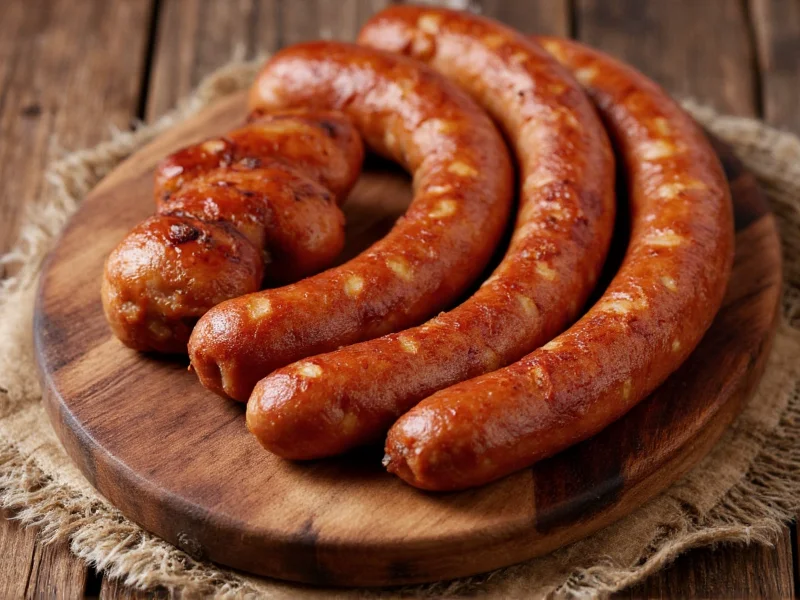Mastering the Art of BBQ Sausage: A Complete Guide
BBQ sausage represents one of the most satisfying grilled foods when prepared correctly. Unlike other meats that require precise timing, sausages offer more flexibility while demanding specific techniques to achieve that perfect balance of juicy interior and caramelized exterior. Understanding the science behind sausage composition—particularly the fat content and casing integrity—makes all the difference between a delicious meal and a kitchen disaster.
Selecting the Perfect Sausages for Your Grill
Not all sausages perform equally on the barbecue. Fresh, uncooked sausages generally yield superior results compared to pre-cooked varieties. Look for sausages with 20-30% fat content, as this ensures juiciness without excessive flare-ups. Traditional bratwurst, Italian sausage, and chorizo stand out as excellent choices for grilling due to their robust flavors and appropriate fat ratios.
When purchasing sausages, examine the ingredient list for quality indicators. The best BBQ sausage options contain recognizable ingredients with minimal fillers. Avoid products listing 'mechanically separated meat' or excessive preservatives, as these often result in poor texture and flavor when grilled.
| Sausage Type | Best Grill Temp | Cooking Time | Internal Temp |
|---|---|---|---|
| Bratwurst | 325-350°F | 18-22 min | 160°F |
| Italian Sausage | 300-325°F | 15-20 min | 160°F |
| Chorizo | 350-375°F | 12-15 min | 160°F |
| Knockwurst | 300-325°F | 10-12 min | 160°F |
Essential Preparation Techniques for BBQ Sausage
Proper preparation separates amateur attempts from professional results when grilling sausages. Always bring sausages to room temperature for 20-30 minutes before placing them on the grill. This prevents uneven cooking and reduces the risk of splitting. Contrary to popular belief, piercing sausages before cooking releases precious juices and should be avoided.
For fresh sausages with natural casings, consider par-cooking in simmering water or beer for 5-7 minutes before grilling. This technique, known as 'poaching,' ensures thorough cooking without burning the exterior. However, pre-cooked sausages require direct grilling without this step.
Optimal Grilling Methods and Temperature Control
Mastering heat management proves crucial for perfect BBQ sausage. Create a two-zone fire on your charcoal or gas grill, with one side at medium heat (325-350°F) and the other side cooler for indirect cooking. Start sausages on the indirect side to cook through gently, then move to direct heat for the final 3-5 minutes to develop that desirable char and caramelization.
Monitor internal temperature using an instant-read thermometer rather than relying on appearance alone. Sausages reach safe eating temperature at 160°F, but removing them at 155°F accounts for carryover cooking during resting. Never press sausages with tongs, as this squeezes out flavorful juices.
Troubleshooting Common BBQ Sausage Problems
Even experienced grillers encounter issues with sausages. If your BBQ sausage splits during cooking, the grill temperature likely exceeds 375°F or you placed cold sausages directly over high heat. Prevent this by maintaining proper temperature control and allowing sausages to come to room temperature first.
Dry sausages typically result from overcooking or insufficient fat content. When grilling, maintain a consistent temperature and avoid frequent flipping. Let sausages rest for 5 minutes after cooking to allow juices to redistribute. If flare-ups occur, move sausages to the cooler side of the grill temporarily.
Serving and Storage Recommendations
Serve BBQ sausage immediately after the resting period for optimal texture and temperature. Traditional pairings include soft buns, sauerkraut, grilled peppers and onions, and mustard varieties. For enhanced flavor, consider serving with a complementary sauce such as beer mustard, chimichurri, or a simple garlic aioli.
Store leftover cooked sausages in an airtight container in the refrigerator for up to four days. Reheat gently in a skillet over medium-low heat with a splash of water or broth to restore moisture. Freezing cooked sausages extends their shelf life to two months, though texture may degrade slightly upon thawing.











 浙公网安备
33010002000092号
浙公网安备
33010002000092号 浙B2-20120091-4
浙B2-20120091-4